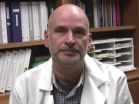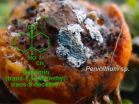MUNICH, GERMANY, December 07, 2012 (Press-News.org) In contrast to MBA programs, Doctorates of Business Administration (DBA) are not covered by internationally recognized rankings. Hence, proxies are needed to assess the quality of a program. The new platform Doctor of Business Administration Compass provides an overview of the five most important quality criteria:
1. Assess the research quality of the faculty.
2. Have a look at accredited programs.
3. Assess the reputation of a school.
4. How experienced is the school in teaching?
5. How well is the school exposed to executives?
The Doctor of Business Administration (DBA) offers executives a great opportunity: In three to four years, they can complete a doctoral degree in management without leaving their companies. In many cases, they can even design their research around a topic from within their companies so that their employer profits from the DBA studies. DBA programs differ a lot in terms of quality, however. The platform Doctor of Business Administration Compass provides an overview of more than 230 programs worldwide and guidelines on how to find a quality DBA.
The Doctor of Business Administration Compass www.dba-compass.com went online in October 2012 and provides an overview of management doctorates for professionals. It contains a database with schools and programs, background information on rankings and the difference between a DBA and a PhD as well as events and application deadlines. Further websites are: Master in Management Compass and Master of Business Administration Compass.
New Platform for Doctorates of Business Administration (DBA): How Do You Identify a Quality Program in the Absence of Rankings?
How do you assess the quality of a Doctor of Business Administration (DBA) program in the absence of rankings? The new website DBA Compass provides guidelines for professionals who look for part-time doctoral programs in management.
2012-12-07
ELSE PRESS RELEASES FROM THIS DATE:
Visionary in Unpadded Whiteboard Room Affirms 21 Dec is the Beginning of the End - Reaches Out to 99 Influencers for Their Thoughts Via Twitter
2012-12-07
Scott Townsend, a crazy visionary in an unpadded whiteboard room, says "it's the end of the world as we know it, but not like the movie."
As the 21st December 2012 nears, the world will, according to many people, mark the date when we begin to enter a new era of positive change and consciousness.
To help motivate this much-needed transformation, Townsend is starting by reaching out to 99 influential people on Twitter, each with different values, passions and beliefs to discover what they think needs to change.
Townsend hopes that reaching out to each ...
Bilirubin can prevent damage from cardiovascular disease
2012-12-06
COLUMBIA, Mo. -- Each year, about 610,000 Americans suffer their first heart attack, according to the Centers for Disease Control and Prevention. Heart attacks and other symptoms of cardiovascular disease can be caused when blockage occurs in the arteries. In a new study from the University of Missouri, a scientist has discovered a natural defense against arterial blockage: bilirubin.
Bilirubin is typically something parents of newborns hear about when their children are diagnosed with jaundice. Generated during the body's process to recycle worn-out red blood cells, ...
OHSU study shows that a molecule critical to nerve cells increases drammatically during hypertension
2012-12-06
Researchers at Oregon Health & Science University's School of Dentistry have made an important connection between a molecule critical to nerve cells and high blood pressure. Production of the molecule Brain-Derived Neurotrophic Factor (BDNF) appears to increase dramatically in blood pressure-sensing nerve cells during hypertension. The study, published online in the Journal of Neuroscience Research, may someday have implications for the prevention and treatment of high blood pressure, which affects about one in three adults in the United States.
BDNF is essential to ...
Protein controlling glucose metabolism also a tumor suppressor
2012-12-06
A protein known to regulate how cells process glucose also appears to be a tumor suppressor, adding to the potential that therapies directed at cellular metabolism may help suppress tumor growth. In their report in the Dec. 7 issue of Cell, a multi-institutional research team describes finding that cells lacking the enzyme SIRT6, which controls how cells process glucose, quickly become cancerous. They also found evidence that uncontrolled glycolysis, a stage in normal glucose metabolism, may drive tumor formation in the absence of SIRT6 and that suppressing glycolysis ...
European Romani exodus began 1,500 years ago, DNA evidence shows
2012-12-06
Despite their modern-day diversity of language, lifestyle, and religion, Europe's widespread Romani population shares a common, if complex, past. It all began in northwestern India about 1,500 years ago, according to a study reported on December 6th in Current Biology, a Cell Press publication, that offers the first genome-wide perspective on Romani origins and demographic history.
The Romani represent the largest minority group in Europe, consisting of approximately 11 million people. That means the size of the Romani population rivals that of several European countries, ...
At high altitude, carbs are the fuel of choice
2012-12-06
Mice living in the high-altitude, oxygen-starved environment of the Andean mountains survive those harsh conditions by fueling their muscles with carbohydrates. The findings, reported online on December 6 in Current Biology, a Cell Press publication, provide the first compelling evidence of a clear difference in energy metabolism between high- and low-altitude native mammals.
"The high-altitude mice we examined in this study are a rare exception to a general exercise fuel use pattern seen in lowland mammals," said Marie-Pierre Schippers of McMaster University. "Studying ...
Disgust circuit: Flies sniff out and avoid spoiled food
2012-12-06
VIDEO:
The ability to detect rotten food is so crucial for survival that even flies have a dedicated neural circuit to do just that, according to a study published on December...
Click here for more information.
The ability to detect rotten food is so crucial for survival that even flies have a dedicated neural circuit to do just that, according to a study published on December 6th in the Cell Press journal Cell. The brain circuit allows flies to avoid feeding and laying ...
Mexican paradox: While opinion surveys overestimate abortions 10-fold, abortion mortality clearly decreases
2012-12-06
This press release is available in Spanish and French. A collaborative study conducted in Mexico by researchers from the West Virginia University-Charleston (US), Universidad Popular Autónoma del Estado de Puebla (México), Universidad de Chile and the Institute of Molecular Epidemiology of the Universidad Católica de la Santísima Concepción (Chile), revealed that opinion surveys used by researchers from the Guttmacher Institute overestimated figures of induced abortion in the Federal District of Mexico (Mexico DF) up to 10-fold. The research recently published in the International ...
A direct line through the brain to avoid rotten food -- a full STOP signal for Drosophila
2012-12-06
VIDEO:
Bill Hansson and Marcus Stensmyr explain their results now published in CELL.
Click here for more information.
Consuming putrid food can be lethal as it allows bacterial pathogens to enter the digestive system. To detect signs of decay and thus allowing us and other animals to avoid such food poisoning is one of the main tasks of the sense of smell. Behavioral scientists and neurobiologists at the Max Planck Institute for Chemical Ecology in Jena, Germany, have ...
Scientists identify molecules in the ear that convert sound into brain signals
2012-12-06
LA JOLLA, CA – December 6, 2012 – For scientists who study the genetics of hearing and deafness, finding the exact genetic machinery in the inner ear that responds to sound waves and converts them into electrical impulses, the language of the brain, has been something of a holy grail.
Now this quest has come to fruition. Scientists at The Scripps Research Institute (TSRI) in La Jolla, CA, have identified a critical component of this ear-to-brain conversion—a protein called TMHS. This protein is a component of the so-called mechanotransduction channels in the ear, which ...
LAST 30 PRESS RELEASES:
Discovery of a new superfluid phase in non-Hermitian quantum systems
Codes in the cilia: New study maps how Cilk1 and Hedgehog levels sculpt tooth architecture
Chonnam National University researchers develop novel virtual sensor grid method for low-cost, yet robust, infrastructure monitoring
Expanded school-based program linked to lower youth tobacco use rates in California
TV depictions of Hands-Only CPR are often misleading
What TV gets wrong about CPR—and why it matters for saving lives
New study: How weight loss benefits the health of your fat tissue
Astronomers surprised by mysterious shock wave around dead star
‘Death by a thousand cuts’: Young galaxy ran out of fuel as black hole choked off supplies
Glow with the flow: Implanted 'living skin' lights up to signal health changes
Compressed data technique enables pangenomics at scale
How brain waves shape our sense of self
Whole-genome sequencing may optimize PARP inhibitor use
Like alcohol units, but for cannabis – experts define safer limits
DNA testing of colorectal polyps improves insight into hereditary risks
Researchers uncover axonal protein synthesis defect in ALS
Why are men more likely to develop multiple myeloma than women?
Smartphone-based interventions show promise for reducing alcohol and cannabis use: New research
How do health care professionals determine eligibility for MAiD?
Microplastics detected in rural woodland
JULAC and Taylor & Francis sign open access agreement to boost the impact of Hong Kong research
Protecting older male athletes’ heart health
KAIST proposes AI-driven strategy to solve long-standing mystery of gene function
Eye for trouble: Automated counting for chromosome issues under the microscope
The vast majority of US rivers lack any protections from human activities, new research finds
Ultrasound-responsive in situ antigen "nanocatchers" open a new paradigm for personalized tumor immunotherapy
Environmental “superbugs” in our rivers and soils: new one health review warns of growing antimicrobial resistance crisis
Triple threat in greenhouse farming: how heavy metals, microplastics, and antibiotic resistance genes unite to challenge sustainable food production
Earthworms turn manure into a powerful tool against antibiotic resistance
AI turns water into an early warning network for hidden biological pollutants
[Press-News.org] New Platform for Doctorates of Business Administration (DBA): How Do You Identify a Quality Program in the Absence of Rankings?How do you assess the quality of a Doctor of Business Administration (DBA) program in the absence of rankings? The new website DBA Compass provides guidelines for professionals who look for part-time doctoral programs in management.




